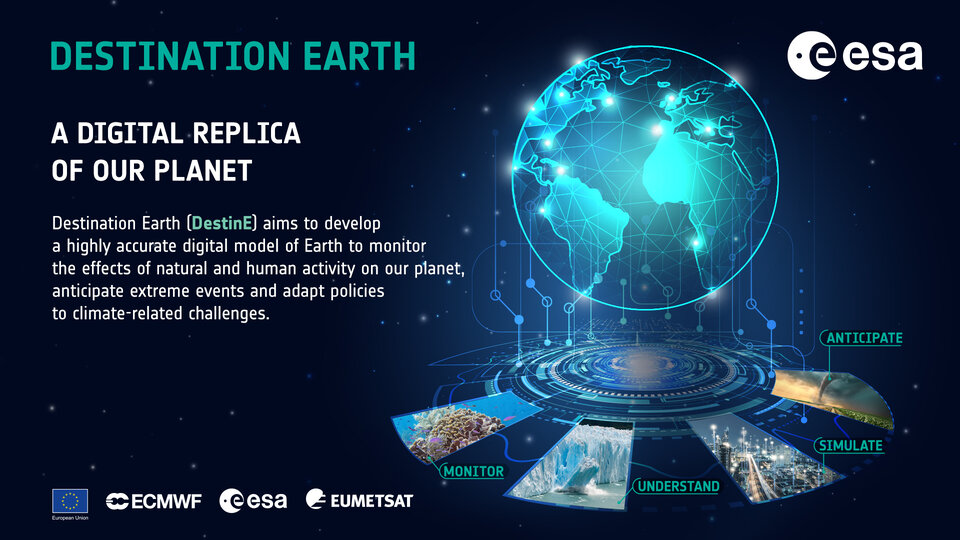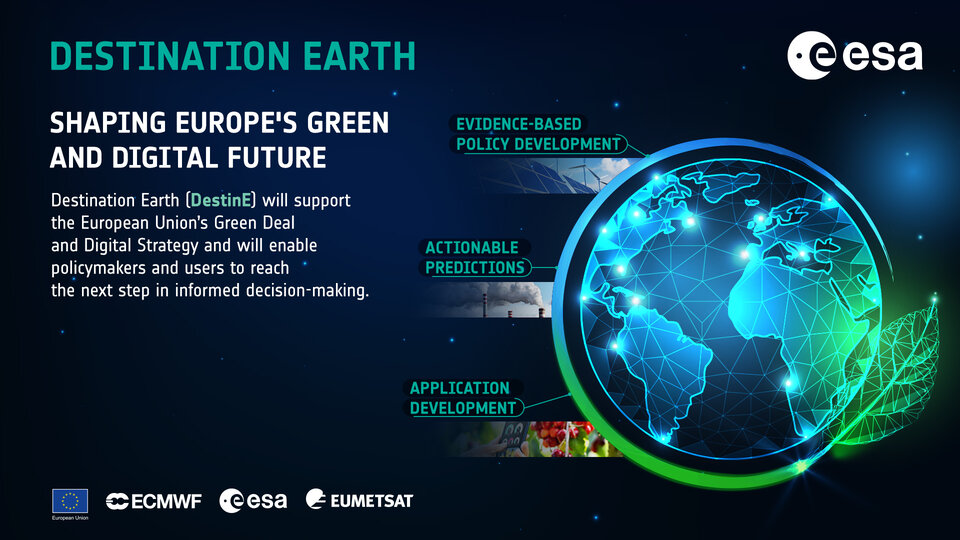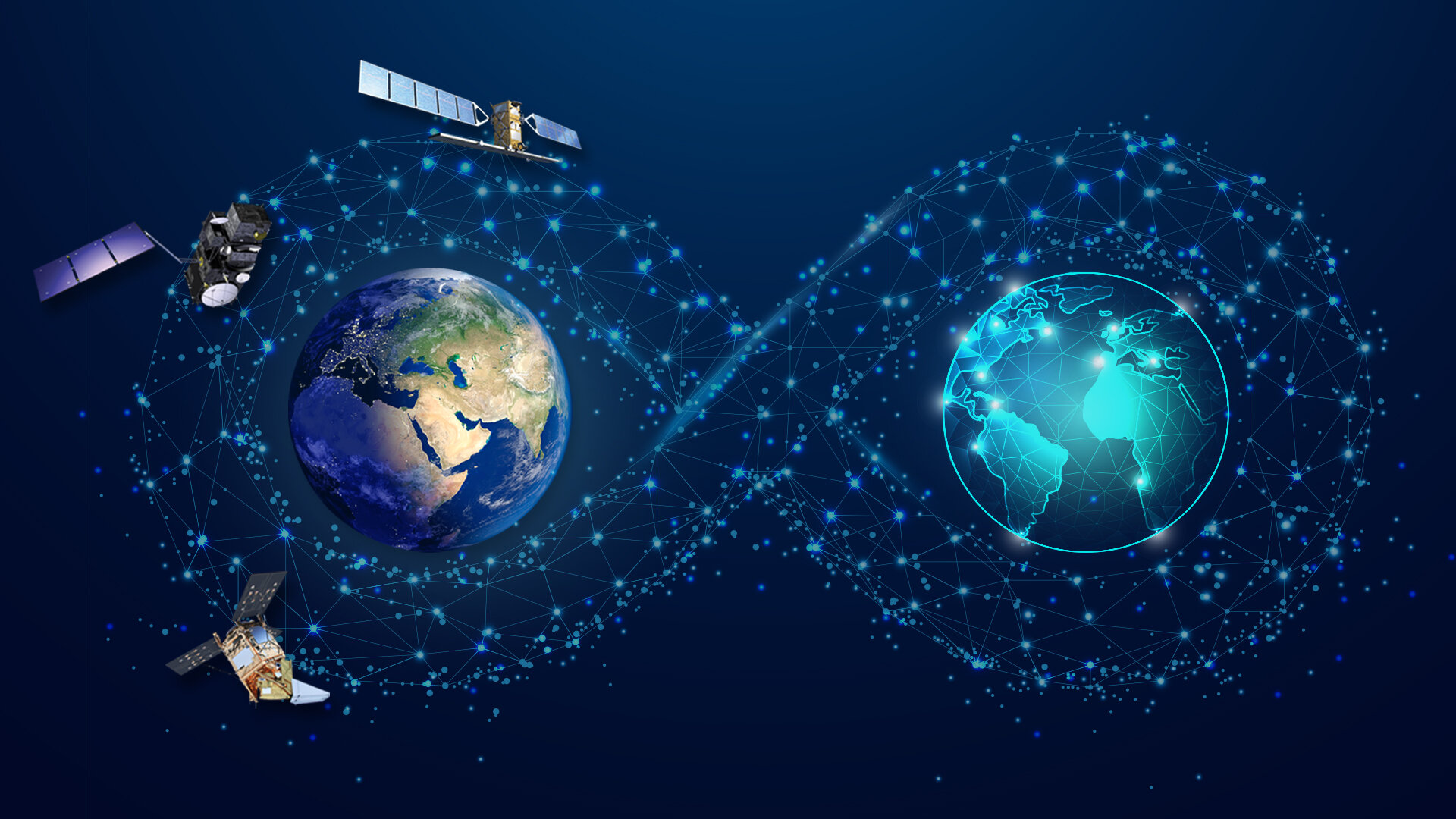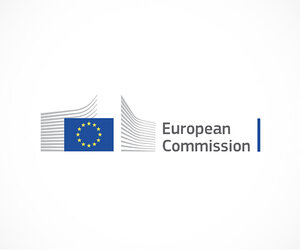Destination Earth
Learn more about Destination Earth, an initiative of the European Union that aims to develop a digital twin, or replica, of our planet.
What is Destination Earth?
Destination Earth (DestinE) is an ambitious initiative of the European Union to create a digital model of Earth that will be used to monitor the effects of natural and human activity on our planet, anticipate extreme events and adapt policies to climate-related challenges.
Using innovative Earth system models, cutting-edge computing, satellite data and machine learning, Destination Earth will allow its users to explore the effects of climate change on the different components of the Earth system, together with possible adaptation and mitigation strategies.

Specifically, DestinE will:
- Support the prediction of both natural disasters and man-made environmental damage with high precision.
- Enable the continuous and accurate monitoring of the health of the planet by focusing on the effects of climate change, for example on the oceans, water, Earth’s ice caps, land use etc.
- Allow us to better understand the socio-economic effects of climate change and the occurrence of extreme natural disasters.
Who will benefit from Destination Earth?
Destination Earth will help scientists and policymakers to understand the complex interactions that the environment and humans will play in shaping Earth’s future. Destination Earth will also form the baseline for effective European adaptation strategies in support of the green transition, helping the EU reach its goal of becoming carbon neutral by 2050, and the implementation of the European Commission’s Green Deal and Digital Strategy.

Who are Destination Earth’s Partners?
The European Commission leads and coordinates the implementation efforts among a core group of leading European organisations which will be responsible for developing the main elements of the initiative.
These include ESA, the European Centre for Medium-Range Weather Forecasts (ECMWF) and the European Organisation for the Exploitation of Meteorological Satellites (Eumetsat).
ESA is responsible for the DestinE Platform, a user-friendly platform providing access to DestinE data, services and applications. The platform is built on an open, flexible, scalable and secure cloud-based architecture. It connects with current and future high-performance computing (HPC) systems and multi-cloud environments.
DestinE supports evidence-based policy and decision-making tools and interfaces directly with the DestinE Data Lake. Users can customise the platform, integrate their own data and develop their own applications. The platform is powered by an extensive range of space-based data sources, including data from ESA’s Earth Explorers, the Copernicus Sentinel series, data from ECMWF and, over time, other major data holdings in Europe.
Eumetsat is responsible for the multi-cloud data lake underpinning DestinE, including its design, establishment and testing, as well as its operations of the online inventory. ECMWF is responsible for the Digital Twin Engine, including the development of the two initial Digital Twins: Digital Twin on Weather-Induced and the Climate Change Adaptation Digital Twin.


Access the video
How do Digital Twins work?
A digital twin is, in essence, a virtual representation that serves as a real-time digital counterpart of a physical object.
Destination Earth’s digital twins are digital replicas of our planet’s complex Earth system. They will be built under thematic categorisations from the different domains of Earth science, such as extreme natural disasters, climate change adaptation, oceans and biodiversity.
DestinE Digital Twins
DestinE will be implemented gradually over the next five to six years. The first two digital twins to be developed will be: Digital Twin on Weather-Induced Extremes and the Climate Change Adaptation Digital Twin.
The Digital Twin on Weather-Induced Extremes, managed by ECMWF, will provide capabilities and services for the assessment and prediction of environmental extremes. Decision-makers will be able to anticipate the occurrence and impacts of extreme natural events, such as flooding and forest fires, with increased precision.

The Digital Twin on Climate Change Adaptation will support the generation of analytical insights and testing of predictive scenarios in support of climate adaptation and mitigation policies at decadal timescales, at regional and national levels.
More digital twins will be developed in the following years and brought together to develop a ‘full’ digital replica of the Earth system by 2030. The possible new developments can include digital twins of the oceans, biodiversity and urban environments.
Timeline
2022: Official launch event of the initiative following the signing of the Contribution Agreements earlier in 2021.
2023: Development of the main component begins.
By 2024: Official launch of Destination Earth. All the components of the system (DestinE Platform, Data Lake, Digital Twin Engine) have been developed. The DestinE Platform and Data Lake will be transferred into operation. Demonstration of the first two digital twins on Weather-Induced Extremes and Climate Change Adaptation.
By 2026: Further enhancement of the DestinE system and integration of additional digital twins and related services.
By 2030: A 'full' digital replica of the Earth.

How to access the DestinE platform
After two years of development and following the initial launch at the LUMI Supercomputer Center in Kajaani, Finland, the DestinE Platform is now fully available for registrations.
The DestinE Platform is an open and secure cloud environment that supports DestinE data exploitation with the aim to meet the needs of a large and diverse community that includes citizens, scientists and academics, commercial entities and policymakers.
All users are invited to register for free on the DestinE Platform to access a selected range of operational services available in the Service catalogue. These include Digital Twin data, various other datasets and processing capabilities, along with visualisation services.
Full access to the platform and all services is available to specific user categories only. A list of these categories is available here.


Access the video













